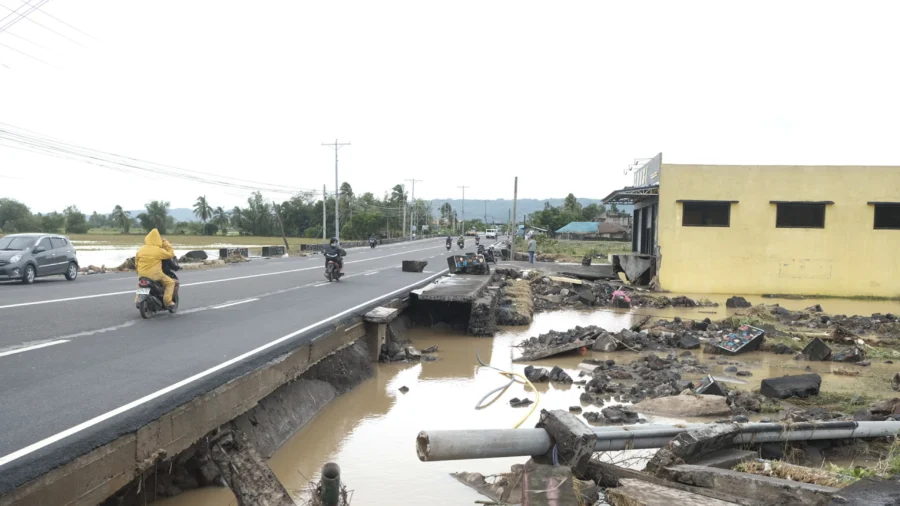MANILA, Philippines—Torrential rain set off by an approaching tropical storm swamped the eastern Philippines with widespread flooding that killed at least nine people, trapped others on their roofs, and sparked frantic appeals for help, officials said Wednesday.
The government shut down public schools and government offices—except those urgently needed for disaster response—on the entire main island of Luzon to protect millions of people as Tropical Storm Trami blew closer from the Pacific.
At least nine people died in five northeastern provinces and in the hard-hit city of Naga before the storm’s expected landfall on the northeastern Philippine coast. Most of the deaths were caused by drowning and landslides, police and local officials said, adding that about seven were missing.
“People have been stuck on roofs of their houses for several hours now,” former Vice President Leni Robredo, who lives in the northeastern city of Naga, said in a post on Facebook early Wednesday. “Many of our rescue trucks have stalled due to the floods.”
Coast guard personnel have been rescuing residents in flooded villages in the eastern Provinces of Sorsogon, Albay, Camarines Sur, Catanduanes, and outlying regions since Tuesday, but provincial authorities said the number of rescue boats and personnel was not enough.
The storm was last tracked about 109 miles east of Echague town in the Province of Isabela. It had strengthened with sustained winds of 59 mph per hour and gusts of up to 71 mph.
The storm was forecast to hit Isabela’s coast Wednesday night to early Thursday, then barrel across northern Luzon before exiting to the South China Sea late Thursday.
Its wide rain band could dump up to 8 inches of rainwater in one day of intense downpours in the most vulnerable provinces on its path, according to state forecasters.
Thousands of villagers have evacuated to emergency shelters in northeastern provinces. Storm warnings were raised in more than 30 northern and central provinces, including in the densely populated capital of Manila, which was not in the storm’s direct path but could be lashed by its pounding rains.
President Ferdinand Marcos Jr. canceled all his appointments Wednesday and convened an emergency meeting to discuss disaster mitigation efforts, Communications Secretary Cesar Chavez said.
“The worst is yet to come, I’m afraid, so let’s all prepare,” Marcos said.
During the meeting, Defense Secretary Gilberto Teodoro said the military’s aircraft and ships would be used for evacuations and disaster response. He said additional airlift power could be provided by friendly countries, if needed.
Thousands of passengers and cargo workers were stranded in several seaports after the coast guard said it suspended inter-island ferry services and barred fishing boats from venturing into the increasingly rough seas.
“We need national intervention,” Rep. Luis Raymund Villafuerte of Camarines Sur Province told DZRH radio network, saying his flood-prone province has about 50 rescue boats but needs about 200.
In Quezon Province, Gov. Angelina Tan said floods in some areas reached up to nearly 10 feet and at least 8,000 villagers have evacuated.
About 20 storms and typhoons batter the Philippines each year. The archipelago also lies in the “Pacific Ring of Fire,” a region along most of the Pacific Ocean rim where many volcanic eruptions and earthquakes occur, making the Southeast Asian nation one of the world’s most disaster-prone.
In 2013, Typhoon Haiyan, one of the strongest recorded tropical cyclones in the world, left more than 7,300 people dead or missing, flattened entire villages, swept ships inland, and displaced more than 5 million in the central Philippines.
By Jim Gomez

